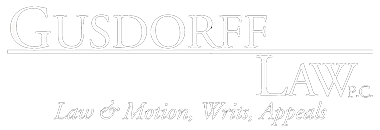Reading an appellate court opinion can feel like deciphering a foreign language. Legal terminology, complex procedural history, and dense reasoning make these documents intimidating for anyone without a law degree. Yet understanding appellate opinions is increasingly important for litigants, journalists, business owners, and engaged citizens who want to grasp how courts interpret laws that affect their lives.
Whether you’re researching a legal issue relevant to your business, following a case that impacts your community, or simply trying to understand an appeal in which you’re involved, this guide will help you navigate appellate court opinions with greater confidence and comprehension.
Why Appellate Opinions Matter
Appellate court decisions do more than resolve individual disputes—they establish legal precedents that guide future cases. When an appellate court interprets a statute, clarifies a legal doctrine, or overturns a lower court’s ruling, that decision becomes binding authority within its jurisdiction. Understanding these opinions helps you grasp not just the outcome of a specific case, but the broader legal principles that courts will apply going forward.
For parties involved in appeals, comprehending the court’s reasoning is essential for determining whether further legal action makes sense, what arguments succeeded or failed, and how the decision affects your rights or obligations.
Start with the Caption and Case Information
Every appellate opinion begins with basic identifying information at the top of the document. The caption tells you the parties’ names, the court issuing the opinion, the case number, and the decision date. Pay attention to the court level—opinions from your state’s highest court (often called the Supreme Court) carry more precedential weight than intermediate appellate court decisions.
The caption also identifies whether this is an appeal from a trial court judgment, an interlocutory appeal (during ongoing proceedings), or a petition for discretionary review. This context helps you understand the procedural posture of the case.
Identify the Judge and Opinion Type
Immediately after the caption, you’ll see which judge authored the opinion and whether other judges concurred or dissented. Most appellate panels consist of three judges, though some cases are heard “en banc” by all judges on the court.
Understanding opinion types is crucial:
Majority Opinion: Represents the court’s official ruling and creates binding precedent. This is the opinion you should focus on understanding.
Concurring Opinion: A judge agrees with the outcome but offers different reasoning. Concurrences don’t create precedent but may influence future legal development.
Dissenting Opinion: A judge disagrees with the majority’s conclusion. Dissents have no precedential value but sometimes predict future changes in the law or highlight weaknesses in the majority’s reasoning.
If multiple judges author separate opinions, the case likely involves complex or controversial legal issues where reasonable minds differ.
Understand the Procedural History
Before diving into legal analysis, appellate opinions typically include a “Procedural History” or “Background” section summarizing what happened in the lower court. This section answers: Who sued whom? What did the trial court decide? What procedural motions or rulings led to this appeal?
Don’t skip this section, even though it can seem tedious. Understanding the procedural context is essential for grasping what issues the appellate court is actually deciding. Many appeals turn on procedural questions—like whether evidence was properly admitted or jury instructions were correct—rather than substantive factual disputes.
Grasp the Facts
Following procedural history, opinions present the relevant facts. Appellate courts generally accept the trial court’s factual findings unless they’re “clearly erroneous,” so the facts section describes what the lower court determined happened based on trial evidence.
Read this section carefully to understand the real-world situation that gave rise to the legal dispute. Appellate opinions often seem abstract, but they’re ultimately about concrete events—a contract breach, a car accident, a disputed will, or a constitutional violation.
Pay attention to which facts the court emphasizes. The opinion may describe many background details, but the facts that receive the most attention are typically those most relevant to the legal analysis that follows.
Identify the Issues on Appeal
After presenting facts, appellate opinions explicitly state the legal issues the court must decide. These appear as questions: “Did the trial court err in excluding the defendant’s expert testimony?” or “Does the statute of limitations bar the plaintiff’s negligence claim?”
These issue statements are your roadmap to the opinion’s analysis. Sometimes courts number the issues, making them easy to spot. Other times you’ll need to identify them from context. Either way, clearly understanding what questions the court is answering prevents confusion as you read the legal analysis.
Decode the Legal Analysis
The heart of any appellate opinion is the legal analysis section, where the court explains its reasoning. This is typically the longest and most complex part of the document. Here’s how to approach it:
Look for the Standard of Review: Early in the analysis, courts typically identify the “standard of review”—the level of deference the appellate court gives to the trial court’s decision. Common standards include “de novo” (no deference; the appellate court decides independently), “abuse of discretion” (significant deference), and “clearly erroneous” (high deference to factual findings). The standard of review dramatically affects the likelihood of reversal.
Identify Applicable Legal Rules: Appellate courts state the relevant legal rules before applying them to the case facts. Look for phrases like “Under [State] law…” or “The statute provides…” These passages tell you what law governs the dispute. Courts often cite previous cases as authority for these legal propositions—that’s how precedent works.
Follow the Application: After stating the legal rule, the court applies it to the specific facts of the case. This is where abstract legal principles meet concrete reality. The court explains why, given these particular facts, the legal rule requires a specific outcome.
Watch for Policy Considerations: Sometimes courts discuss policy reasons supporting their interpretation—concerns about fairness, practical consequences, or legislative intent. These discussions reveal the values and priorities influencing judicial decision-making.
Pay Attention to Quotations and Citations
Appellate opinions are filled with quotations from statutes, previous cases, and legal treatises. When you encounter quotation marks, slow down—the court is relying on authoritative language to support its reasoning.
Citations appear in various formats but typically include a case name, volume number, reporter abbreviation, page number, and year. You don’t need to understand citation format to grasp the opinion, but recognize that citations show the court is building on established legal authority rather than making decisions arbitrarily.
Understand the Holding and Disposition
Near the end of the opinion, the court announces its “holding”—the legal rule or principle it’s establishing—and its “disposition”—what happens to the case next. Common dispositions include:
- Affirmed: The lower court’s decision stands
- Reversed: The lower court’s decision is overturned
- Remanded: The case is sent back to the lower court for further proceedings consistent with the appellate court’s ruling
- Reversed and Remanded: The decision is overturned and the case sent back for additional proceedings
Understanding the disposition tells you who “won” the appeal, though sometimes both parties achieve partial victories.
Use Available Resources
Don’t hesitate to look up unfamiliar legal terms as you read. Legal dictionaries (like Black’s Law Dictionary, available online) provide definitions for technical terminology. Many courts also publish glossaries explaining common appellate terms.
If you’re researching a specific legal issue, reading multiple opinions on the same topic helps you understand how courts approach similar questions and reveals evolving legal trends.
When to Seek Professional Help
While these tips help laypersons understand appellate opinions, fully grasping their implications—especially for your specific situation—often requires professional legal guidance. If you’re involved in litigation, considering an appeal, or need to understand how an appellate decision affects your rights or business, consulting with an experienced appellate attorney is essential.
Appellate lawyers specialize in analyzing court opinions, identifying winning arguments, and crafting persuasive briefs that appellate judges find compelling. They can explain how recent decisions impact your case, whether grounds for appeal exist, and what strategies offer the best chance of success.
When Professional Appellate Guidance Makes the Difference
Appellate court opinions may never be light reading, but with patience and these practical tips, laypersons can grasp their essential meaning and significance. Start with the basics—who are the parties, what did the lower court decide, and what issues are on appeal. Then work through the legal analysis systematically, identifying the applicable legal rules and how the court applies them to the case facts. Pay special attention to the holding and disposition to understand what the court decided and why.
Understanding appellate opinions empowers you to be an informed participant in legal proceedings, make better business decisions based on legal developments, and engage more meaningfully with our judicial system. When cases involve your interests directly, however, remember that professional legal counsel remains invaluable for navigating the complexities of appellate practice and protecting your rights.
If you need assistance understanding an appellate court opinion or determining whether an appeal is appropriate in your case, contact our appellate law firm for a consultation.
Our experienced appellate attorneys can analyze court decisions, explain their implications for your situation, and provide the strategic guidance you need.











